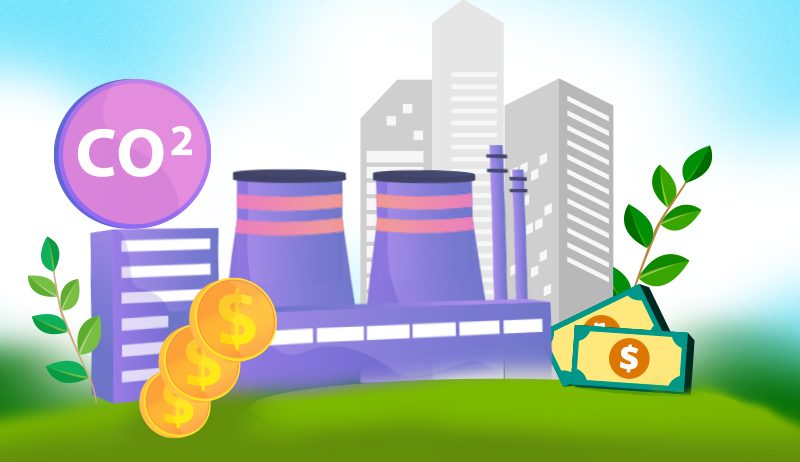Electrification plays a crucial role in Australia. Electrification in Australia impacts individuals and industries. But what can electrification do for the future of Australian industry?
Let’s find out.
Impact of Electrification on The Future of Australian Industry
Reduced Carbon Emissions
Energy Efficiency:
Renewable Energy Integration:
Innovation and Technology Adoption:
Electrification drives technological innovation. Transitioning to electric-powered machinery and processes can revive the development and adoption of advanced technologies.
Technologies like automation and smart solutions can tackle overall industrial competitiveness.
Job Creation:
The shift towards electrification can create new job opportunities in industries related to renewable energy, electric vehicle manufacturing, energy storage, and other emerging sectors.
This transition can contribute to the growth of a skilled workforce and support economic development.
Supply Chain Resilience:
Global Market Access:
Regulatory Compliance:

Infrastructure Development:
The transition to electrification may necessitate the development of new infrastructure, such as electric vehicle charging stations, renewable energy facilities, and smart grids.
These infrastructure investments can contribute to economic growth and create opportunities for innovation.
Resilient and Sustainable Growth:
Overall, electrification can create Australia’s more resilient and sustainable industrial landscape. It provides a pathway for industries to thrive in a future characterised by environmental stewardship, technological progress, and changing consumer preferences.
Collaboration among government, industry stakeholders, and the research and development sector is essential to realise these benefits fully.
Policymakers and industry leaders must work together to create a conducive environment for electrification, including supportive policies, incentives, and investments in research and development.
Why does Electrification Allow for More Energy Efficiency?
How does the adoption of electrification contribute to enhanced energy efficiency? Many conventional heating processes powered by fossil fuels exhibit inefficiency, resulting in significant heat waste.
In contrast, electrical heating technologies demonstrate improved energy utilisation by:
- Delivering heat at the precise temperature required eliminating the common practice of providing industrial heat at unnecessarily high temperatures.
- Directly transferring heat to a material, minimising heat loss to the surroundings.
- Supplying heat at the point of use, thereby reducing distribution losses.
- In some cases, eliminating the need for heat includes using reverse osmosis to remove water or employing ultraviolet light for paint curing.
Electrical Energy Generation in Australia

Australia’s electrical energy generation was a mix of various sources. The energy landscape has evolved over the years.
Here are some key aspects of electrical energy generation in Australia:
Renewable Energy: Australia has been making substantial progress in increasing the share of renewable energy in its electricity mix. These include wind, solar, hydroelectric, and biomass sources. The country has abundant renewable resources, especially solar and wind, making it well-suited for clean energy generation.
Solar Energy: Australia has one of the highest solar radiation levels globally, leading to widespread adoption of solar photovoltaic (PV) systems at residential and utility scales.
Wind Energy: Wind power has also gained traction, with wind farms contributing to the electricity grid in various regions.
Hydroelectric Power: While less dominant than in some other countries, Australia has hydroelectric power stations contributing to its energy mix.
Natural Gas: Natural gas has contributed significantly to Australia’s electricity generation. Gas-fired power plants provide a flexible and relatively cleaner alternative to coal.
Nuclear Energy: As of my last update, Australia has no commercial nuclear power plants, and nuclear energy has been a topic of debate rather than a significant contributor to the energy mix.
Energy Storage: Given the intermittent nature of some renewable sources like solar and wind, there is a growing focus on energy storage solutions such as batteries. These technologies help balance the grid by storing excess energy during high-generation and low-production periods.
Electric Vehicles (EVs) and Charging Infrastructure: The integration of renewable energy extends to the transportation sector, where adopting electric vehicles (EVs) is encouraged. Industries may invest in EV fleets and develop charging infrastructure powered by renewable energy sources.
Benefits of Electrifying Australia
Environmental Sustainability:
Reduced Carbon Emissions: Electrification can contribute to lower carbon emissions, especially if the electricity generation comes from renewable sources like solar, wind, and hydropower.
Air Quality Improvement: Shifting away from fossil fuels for transportation and industrial processes can improve air quality and public health.
Energy Efficiency:
Improved Energy Conversion: Electric systems often offer higher energy efficiency than traditional combustion processes, reducing energy waste.
Advanced Technologies: Electrification facilitates the adoption of advanced technologies such as electric vehicles, which tend to be more energy-efficient than their internal combustion counterparts.
Diversification of Energy Sources:
Renewable Energy Integration: Electrification provides a platform for integrating renewable energy sources into various sectors, reducing dependence on finite fossil fuel resources.
Grid Resilience: A diversified energy mix, including renewables, enhances the resilience of the power grid, making it more adaptable to changes in energy demand and supply.
Innovation and Economic Growth:
Technological Advancements: Electrification can drive innovation in technology and engineering, fostering economic growth and competitiveness.
Job Creation: Developing electric technologies, renewable energy projects, and related industries can create employment opportunities and stimulate economic activity.
Reducing Environmental Impact
Energy Independence: Electrification reduces reliance on imported fossil fuels, contributing to greater energy security and independence.
Price Stability: A shift to locally generated electricity can stabilise prices, avoiding fluctuations in global fossil fuel prices.
Infrastructure Development:
Smart Grids: Electrification may lead to the development of smart grids, enhancing the efficiency and reliability of the power distribution system.
Charging Infrastructure: Increased adoption of electric vehicles necessitates the development of charging infrastructure, fostering growth in related industries.

Social Benefits:
Improved Public Health: Reduced air pollution from electrification can improve public health outcomes, particularly in urban areas.
Access to Clean Energy: Electrification can extend access to clean and affordable energy, benefiting urban and rural communities.
Climate Change Mitigation:
Contribution to Climate Goals: Electrification aligns with global efforts to mitigate climate change by reducing greenhouse gas emissions from various sectors.
Carbon Neutrality Targets: Electrification supports the achievement of carbon neutrality targets set by governments and industries.
Adaptation to Changing Technologies:
Future-Ready Infrastructure: Electrification positions Australia to adapt to evolving technologies and global energy trends, ensuring readiness for future advancements.
It’s important to note that realising these benefits requires coordinated efforts from government, industry stakeholders, and the public to invest in infrastructure, implement supportive policies, and embrace sustainable practices.
Digital Transformation is Upending Australian Industries
Digital transformation lies at the core of the energy sector’s aspirations for achieving net-zero goals.
The intersection of these goals, advancements in digital and industrial technologies and shifting consumer awareness are fostering the emergence of novel digital possibilities within the energy system.
The digital transformation highlighted that Australia’s energy suppliers are at the forefront globally in leveraging digitisation to align with net-zero objectives.
According to estimates from the World Economic Forum (WEF), the potential value unlocked by digital transformation in the global electricity sector alone is projected to be USD 1.3 trillion.
Australian energy suppliers intend to employ digital business transformation as a driving force for achieving net-zero outcomes.







